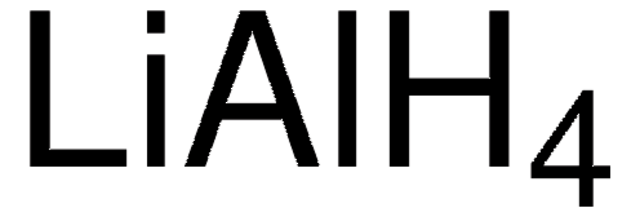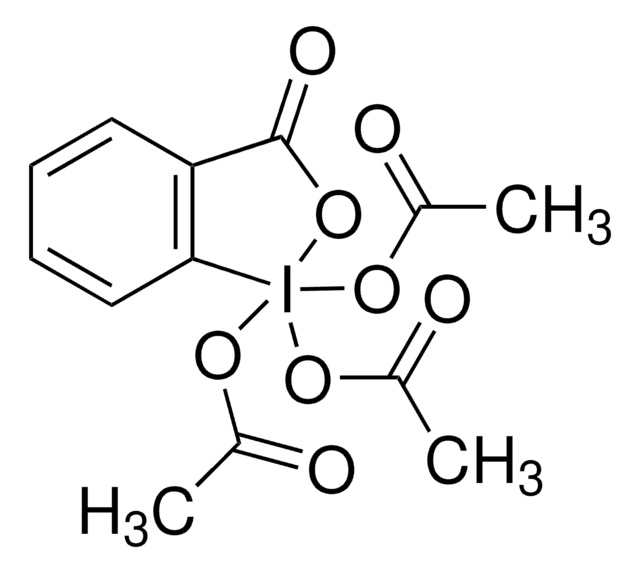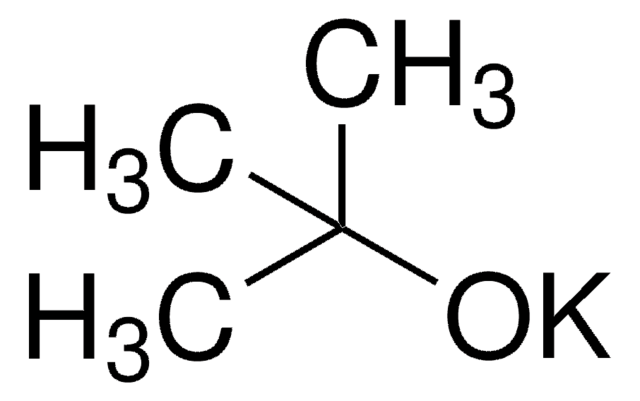703508
Lithium aluminum hydride solution
2.3 M in 2-methyltetrahydrofuran
Synonym(s):
LAH, Lithium alanate, Lithium tetrahydroaluminate
About This Item
Recommended Products
form
liquid
Quality Level
reaction suitability
reagent type: reductant
greener alternative product characteristics
Safer Solvents and Auxiliaries
Use of Renewable Feedstocks
Inherently Safer Chemistry for Accident Prevention
Learn more about the Principles of Green Chemistry.
sustainability
Greener Alternative Product
concentration
10 % (w/w)
2.3 M in 2-methyltetrahydrofuran
density
0.883 g/mL at 25 °C
greener alternative category
, Aligned
storage temp.
2-30°C
SMILES string
[Li+].[AlH4-]
InChI
1S/Al.Li.4H/q-1;+1;;;;
InChI key
OCZDCIYGECBNKL-UHFFFAOYSA-N
Looking for similar products? Visit Product Comparison Guide
General description
Application
2-Methyltetrahydrofuran (2-MeTHF): A Biomass-Derived Solvent with Broad Application in Organic Chemistry
- The preparation of thermoplastic polyester polyamides from oleic acid
- Lithium-polymer batteries
- Hydrodefluorination of gem-difluoromethylene derivatives
- Asymmetric aldol reactions
- Synthesis of Li-Al-N-H composites with hydrogen absorption / desorption properties
LAH is a powerful reducing agent for many different reduction reactions such as that of ketones to alcohols
Signal Word
Danger
Hazard Statements
Precautionary Statements
Hazard Classifications
Acute Tox. 4 Oral - Eye Dam. 1 - Flam. Liq. 2 - Skin Corr. 1A - Water-react 1
Supplementary Hazards
Storage Class Code
4.3 - Hazardous materials which set free flammable gases upon contact with water
WGK
WGK 2
Flash Point(F)
10.4 °F - closed cup - Solvent
Flash Point(C)
-12 °C - closed cup - Solvent
Personal Protective Equipment
Regulatory Information
Choose from one of the most recent versions:
Already Own This Product?
Find documentation for the products that you have recently purchased in the Document Library.
Our team of scientists has experience in all areas of research including Life Science, Material Science, Chemical Synthesis, Chromatography, Analytical and many others.
Contact Technical Service





